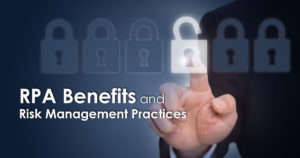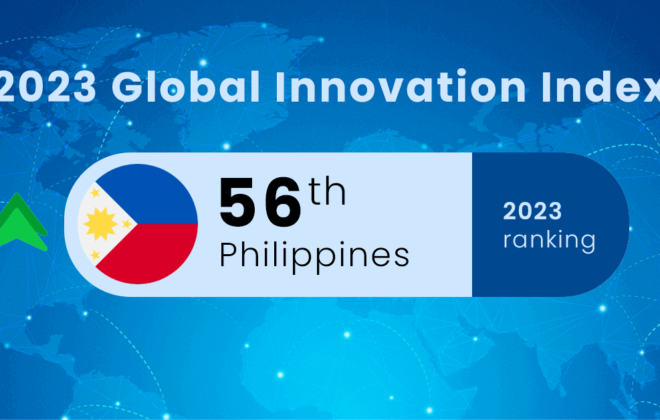RPA Benefits and Risk Management Practices
As technology evolves, organizations all over the world continue to improve their products and services by making their processes more efficient. Automating daily operational tasks proves to be one of the most effective solutions in optimizing business performance while reducing costs. Robotic Process Automation or RPA is a software technology that serves as a substitute for human resources in performing repetitive, rules-based, and high-volume processes.
RPA allows organizations to be less process labor dependent, and at the same time, reduces inherent error in human work to improve quality and accuracy. Just this year, Deloitte reported that 53% of organizations now utilize RPA for better efficiency and higher productivity. It’s more prevalent among businesses with stable and laborious endeavors such as accounting and IT processes.

Why do companies turn to RPA?
One of the biggest reasons why organizations utilize RPA is efficiency. Automation streamlines tasks by allowing virtual bots to strictly follow rules built on the platform which therefore lessens the possibility of committing errors as opposed to manual work.
Automation also helps companies reduce costs intended for using multiple tools at a time. It’s also flexible enough to be customized depending on the needs of each business.
RPA security risks
While automating daily processes brings several benefits, there are a few risks attached to it that IT security professionals should be wary about.
1. Bot vulnerability
Most RPA systems mainly utilize bots acting as ordinary users in performing tasks. Since it’s essentially an application itself, it counts as an intellectual property asset that can interact with other applications and peripheral inputs within the organization’s entire system. Anyone who has physical access to machines running the system can easily manipulate and intervene.
Luckily, some RPA providers give enterprises the option to disable the mouse and keyboard as the bot performs its tasks. Some even offer a stealth mode that hides the bot from sight.
2. Data security
RPA bots often deal with confidential data. Hence, anyone who can access these bots can also access valuable company assets and take advantage of it. Fortunately, this can easily be avoided by following standard security protocols.
Managing Risks
Monstar Lab Philippines Managing Director Allan Tan shares three fundamental steps that businesses can follow to minimize any security risks that may come with adopting and implementing RPA.
1. Assign proper access rights to agents
Segregate and restrict data access based on different roles in the RPA team. Constrain activities to specific roles so that only assigned authorized users may access sensitive data in the system. Consequently, avoid creating a super-agent account which has access to all systems. This helps prevent any fraudulent activity and keeping valuable data highly secured. Additionally, review access rights periodically in conformance to standard security policies.
2. Log all activities
Tracking each activity performed by the team and by robotic processes generates more control over potentially troublesome actions. Customize your RPA environment with an active directory integration to increase business efficiency and ensure traceability for audit purposes.
3. Encrypt data
Encryption adds an extra layer of security to the business. While role-based access gives protection from internal security risks, data encryption protects the company from any external malicious attacks.
At any rate, security risks of any kind – including those that may come with RPA integration – can be reduced or avoided if businesses strictly follow IT protocols. In fact, RPA increases uniform compliance with the organization’s requirements built on the platform. It is best to be cautious in choosing the correct automation system that fits the needs of each enterprise. Overall, carefully implemented robotic process automation reduces the risks that come from inherent human error.
Get your free Robotic Process Automation (RPA) Software:
Download here





